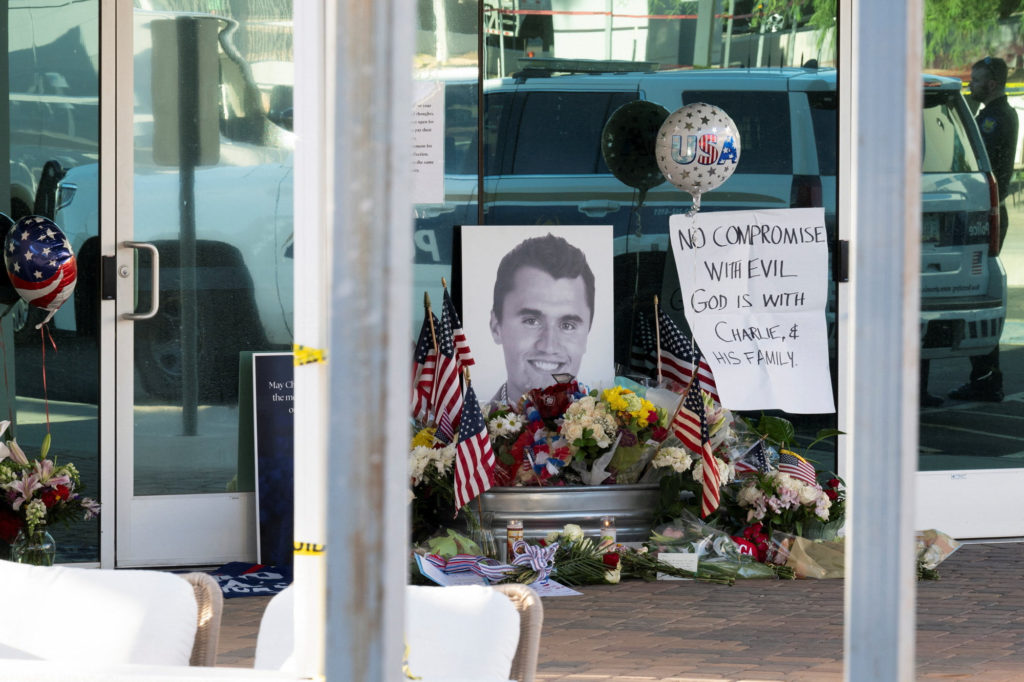Inscription on Bullet Reveals Suspect’s Ideological Motives in Charlie Kirk Case
A federal inquiry into the death of Charlie Kirk has taken a significant turn following the discovery of a hand-engraved message on a key piece of forensic evidence. A bullet linked to the alleged killer, Tyler Robinson, carries an Italian inscription that investigators believe provides a direct window into his mindset and premeditated intent. The phrase, “La verità resta,” translates to “The truth remains” and has connected the violent act to Robinson’s deep-seated obsession with ideological purity and 19th-century philosophy.
The detail, which has reignited the investigation, was unearthed from a recently unsealed forensic report. This finding recasts the incident not as a random act, but as a symbolic gesture meticulously planned by the suspect. Authorities are now piecing together a complex portrait of Robinson, whose personal writings and digital footprint reveal a growing preoccupation with themes of truth, betrayal, and legacy.

The Discovery of a Coded Message
The crucial evidence came to light during a late-stage forensic review, long after most materials from the scene had been catalogued. The bullet was initially logged as “unremarkable” and sent for standard ballistic testing. Its significance was only recognized when a junior analyst, using ultraviolet light, noticed a faint pattern of indentations on its surface. What first appeared to be accidental tool scratches were, upon magnification, revealed to be deliberately etched letters forming the Italian phrase.
Forensic specialists confirmed the inscription was made with a fine needle or a similar engraving tool before the bullet was fired. The precision of the shallow etching ruled out any possibility of it being a post-incident modification or a simple manufacturing mark. One law enforcement source familiar with the evidence described the act as deeply personal, stating, “It’s the kind of message you leave when you want to be remembered. Whoever did it knew exactly what they were doing.”

A Suspect’s Philosophical Fixation
Once the inscription was translated, investigators began to cross-reference the finding with other evidence collected from Tyler Robinson’s possession. A crucial link emerged from handwritten notes found in his apartment, which contained fragmented phrases in both Latin and Italian. These notes shared thematic undertones of justice and truth, with some passages copied directly from the works of 19th-century Italian philosopher Giuseppe Mazzini, a central figure in Italy’s unification known for his writings on the inseparability of truth and sacrifice.
This connection provided a powerful context for the message on the bullet. A source close to the federal inquiry remarked, “Robinson’s fascination with these themes appears to have intensified in the months leading up to the incident. That bullet may not have been just a weapon — it was a symbol.” The choice of Italian, which initially baffled investigators due to Robinson’s lack of any known travel or family ties to Italy, now appeared to be a deliberate part of this ideological framework.
Linguistic analyst Dr. Fiona Leone explained that the phrase “La verità resta” carries a weight beyond its direct translation. “It’s not just ‘truth remains,’” she noted. “In Italian, the phrase carries a tone of defiance — like saying ‘you can’t bury the truth, no matter what happens.’ It’s poetic, but also pointed. Someone who chooses those words is trying to make a statement that will outlive them.”
Symbolism, Extremism, and Public Reaction
The discovery has fueled widespread discussion online, where digital sleuths and amateur historians have proposed various interpretations of the phrase. Some have connected it to mottos from Renaissance art depicting martyrdom, while others suggest a reference to Dante Alighieri’s Divine Comedy, where divine justice and truth are central themes. This speculation intensified after a user claimed to have found an old, now-deleted online post by Robinson that mentioned “truth as the last defense,” suggesting the inscription was part of a long-held belief system.
Cultural historian Michael D’Angelo commented on the performative nature of the act, noting, “The wording feels almost cinematic. It’s the language of someone who sees themselves not as a villain, but as a messenger — even if their act is condemned.”
This new information has also reopened emotional wounds for those close to Charlie Kirk. A family acquaintance told reporters, “Charlie believed in truth. To see that word — verità — twisted into something connected to violence feels cruel.”
Experts in behavioral criminology see the inscription as a psychological signature. “It’s the intersection of belief and behavior,” said Dr. Alicia Hart. “Even when it’s just a phrase, it tells us how the individual wanted their actions to be remembered.” This act of engraving an object before a crime is often seen as evidence of premeditation combined with an intense emotional fixation.
The Unanswered Question and Ongoing Investigation
While the inscription provides insight into Robinson’s state of mind, it also leaves a primary question unanswered: Why Italian? Theories range from the language being chosen for its perceived profoundness to the possibility that it was a coded message intended for a specific, unknown individual. Dr. Leone suggested this possibility, stating, “Language is a bridge. If you know your audience, you know how to speak to them — even in code.”
Federal authorities have urged the public to avoid excessive speculation, with an FBI spokesperson emphasizing, “Context is everything. An inscription alone doesn’t define a motive.” However, the bureau has confirmed the bullet and its markings are now a significant part of the official record. Prosecutors have not yet indicated if the engraving will be a central element in upcoming legal proceedings, but it will likely serve as powerful evidence of intent. The phrase “La verità resta” has transcended the case file, becoming a cultural talking point on how ideology can manifest in cryptic and violent ways, forcing a deeper examination of a tragedy many thought was already understood.